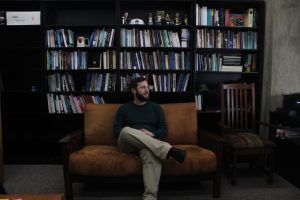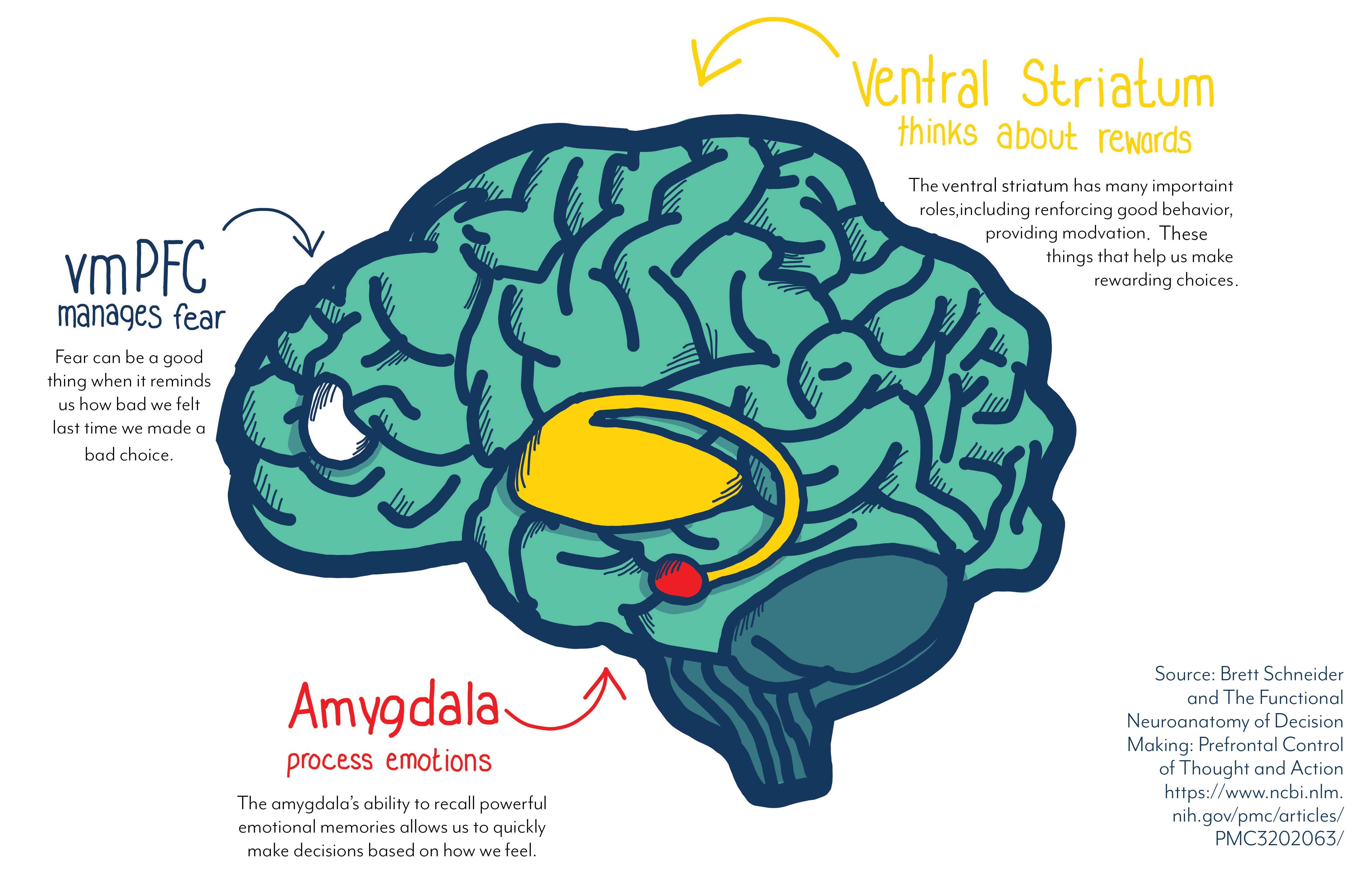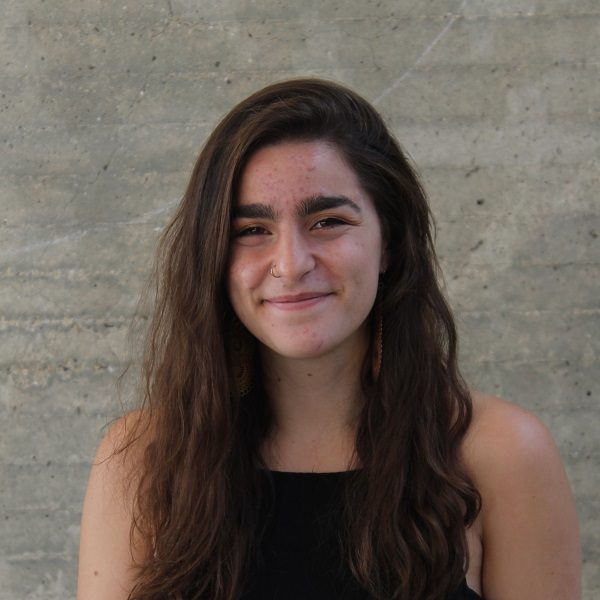Decisions, Decisions
DECISIONS, DECISIONS
How do we make choices? Philosophy, biology, economics, religion and more help us weigh our options
Mike Titelbaum’s goal was to stay as dry as possible at the Badgers game. He decided days in advance that he wouldn’t bike to the stadium because he was confident that it would rain. By the time Saturday rolled around, Titelbaum saw that he was right about the weather. Even so, he decided to drive, park and walk from his car to his seats just to see his beloved Badgers play — a choice that led him to get “very, very wet.”
On an average day, adults make about 35,000 conscious decisions like the ones Titelbaum made about his transportation, according to Cornell University researchers. Numerous theories spanning across many disciplines explain how these decisions are made and if they can be classified as good or bad. In Titelbaum’s case, he made the wrong choice for staying dry, but wasn’t upset about it because, he says, “It was fun anyway!”

Mike Titelbaum’s office is full of books on philosophy.
Wouldn’t it be nice if there was a way that we could always know what the right decision is? Experts in decision-making say that more than one factor influences how and why we ultimately come to decisions.
Brett Schneider, a UW-Madison psychology graduate student, can tell you where the emotions involved in decision-making happen in your brain. Jenny Greiber, the coordinator of UW-Madison’s analytics of decision making certificate program, could look at trends in the results achieved by others making the same choices. Father Luke Syse, a Catholic priest, may advise you on what decisions will lead to the highest levels of fulfillment. Gretchen Chapman, a social science researcher at Carnegie Mellon University, can tell you what desires might be driving your decisions.
Titelbaum spends a lot of time thinking about decision-making in his role as chair of the philosophy department at UW-Madison, he spends a lot of time thinking about decision-making — beyond choices about how to travel to football games.
Recently, Titelbaum has been looking at decision theory through the lens of Bayes’ theorem, which proposes that individuals make choices based on how they think the world works and what they believe they want. Therefore, people make the wrong choices if they have an inaccurate understanding of the world or they want the wrong things.
How the world works
Bayes’ theorem would have you think that a complete understanding of how the world works would translate to better decisions. However, with limitations in time, resources and capacity, an imperfect view of how the world works is often a better option than having all the facts.
This may seem counterintuitive. However, Chapman doesn’t think it’s possible to know all the facts. Chapman studies decision-making and has created a decision science undergraduate major that highlights how to make decisions through an interdisciplinary approach.
“You’re going to not pick the optimal solution; you’re going to pick the good-enough solution because you want to be efficient about using your time and resources and information,” Chapman says. “Finding the just good-enough solution is actually rational in a certain sense.”
Chapman is looking at decisions through a practical lens, discussing actual decision-making that we can implement in our lives. On the other hand, when Titelbaum applies Bayes’ theorem to decision-making, he has to use complex functions and confidence intervals — aspects that aren’t often available in daily life.
“Formal decision theory, like math-based decision theory, is not typically an awesome tool for making decisions in everyday life because it requires attaching [confidence intervals] to things when you don’t have numbers for those things,” Titelbaum says.
However, the daunting nature of numbers may be shrinking. The field of data analytics and statistics can utilize modern technology to provide new possibilities for those who want to apply statistical or probability calculations in their daily lives, helping them make decisions about what to buy or who to hire, for example.

Illustration by Lily Oberstein
Greiber is quick to share methods for using data to make more well-informed business decisions. She notes that before students can use data to make better choices, they must learn how to visualize it.
“[Students are] learning to ask better questions about what data they need,” Greiber says. “They’re learning about bias in data reporting and also making great visualizations with data that are easier to read for some people other than just traditional spreadsheets.”
Not only can the ability to process the world around you be seen through data analytics, but it can also be seen on a neurological level. Schneider has spent hundreds of hours looking into people’s brains. He studies the ventromedial prefrontal cortex, an area of the brain that manages fear, subsequently helping people make social and interpersonal decisions by triggering unpleasant memories from the past.
One idea he has investigated is the Somatic marker hypothesis. This theory explains that when humans go through emotional experiences, those perceptions of the world create markers in their brains that influence future decision-making. For instance, if a small child eats a bratwurst only to discover she doesn’t like the taste of meat, a somatic marker is created in her brain that reminds her of her previous unpleasant experiences at her next cookout.
Although at first glance this hypothesis and philosophy might not seem interconnected, they are. Antonio Damasio, the neuroscientist who came up with the hypothesis, published his findings in his book, “Descartes’ Error: Emotion, Reason, and the Human Brain.” Damasio directly challenges philosophical theorist René Descartes, who Damasio says overlooks the importance of emotions by only focusing on the mathematical principles involved in decision-making. In contrast, Damasio points out that the emotions stored in somatic markers in our brains can be highly beneficial to those who need to choose a path.
Even after spending a rational amount of time weighing options, analyzing all the available data and having functional somatic markers to remove some of the unknowns, individuals are not guaranteed to make the right decisions for themselves.
Knowing what you want
Titelbaum says you still may not make the right choices if what you want doesn’t line up with your best interests. He says that some people “want the wrong kind of things in an ethical sense, so they make poor decisions that are morally bad, or they want the wrong kinds of things because they don’t understand what will make them happy or what will make them thrive as a person.”

Just a few of the many bobbleheads Titelbaum has collected over the years.
For example, Titelbaum’s weekend plans to go to the football game and the custom-made bobblehead of him in a Warriors uniform in his office show that he is a dedicated sports fan. For the less-devoted game-goers who filled up the bleachers at the rainy game, however, their desire to go to the game may prove less rewarding, as watching football may not be an activity that will give them the most joy.
Deciding if one’s goals are correct is far more ethically ambiguous than understanding what one knows about the world. Gaining more external information can change one’s view about how the world works, but analyzing needs, wants and desires is more internal.
An economist or data scientist might not be willing to make judgment calls about what is a worthy want, but philosophers, including Titelbaum, often address these types of questions head on.
“When you talk to an economist, economists start out just assuming that everyone has preferences, and whatever your preferences are, as long as they kind of mesh together in a rational way, that is fine, and we are just going to figure out how to get you the things you prefer,” he says. “Whereas, a philosopher will say, ‘Wait a second. Are all sets and preferences equally good?’”
Syse is a priest at St. Paul University Catholic Center, where he looks at the day-to-day decisions people face, rather than the larger theories. As a priest, Syse considers himself “like the family practice doctor” in terms of providing help with decision-making.
In his own life, Syse has made choices that he believes have and haven’t made him happy. He has found happiness in his career, but he spent his undergraduate education pursuing a degree in agricultural engineering, a path that may have made him happy, but not as happy as he is today.
“At the beginning of my senior year, I decided to become a priest and enter seminary. But that thought had been in my heart since age 12,” Syse says. “I just didn’t pay much attention to it till I came to college, and in college, I rediscovered my own faith and realized I would be happiest putting God first in my life.”
If we know that people act against their own self-interests — by, say, choosing an unrewarding major, dating someone they know is bad for them or eating dairy when they know they are lactose intolerant — what can we do to stop that? Neuroimaging technology has helped researchers discover what parts of the brain are involved in the decision-making process. These researchers have had some success temporarily altering brain chemistry in those areas to treat depression through a noninvasive process called transmagnetic stimulation.
Returning to Schneider’s area of expertise, we know that the ventromedial prefrontal cortex is involved in decision-making and can often provide the guilt that we need to behave in ways that adhere to social norms. Through either brain damage or natural routes, some individuals have different levels of functioning in their ventromedial prefrontal cortexes that lead them to make highly logical, robotic choices, rather than emotionally based ones.
In research labs, this is measured by posing a thought experiment where people must decide if they would be willing to physically push one person in front of a train to save the lives of five others. In this hypothetical scenario, participants are asked to commit a violent act for a rationally good outcome — a choice that is utilitarian, but requires a level of emotionlessness to be willing to harm someone. Those who decide to act violently usually have less activity in their ventromedial prefrontal cortexes. This poses the question, what if neurobiologists could alter brain function to address these neurological differences in individuals and change their wants? Transmagnetic stimulation is a procedure that could make this reality.
Schneider says that is a dangerous game to play, and neuroscientists need to do more research before the procedure can be widely implemented. Using transmagnetic stimulation has been successful during limited short-term treatments for depression and anxiety, but there are negative implications when it comes to interfering with neurochemistry.
But are bad decisions even really bad? If Titelbaum had achieved his initial goal of avoiding rain on his way to the football game, he would have missed an event that he really enjoyed. Instead, he went against both his belief about how the world works, based on accurate weather reports, as well as his goal of staying dry, and made a decision that made him happy.
Syse says people must make mistakes, but he fears that many are too fearful of bad decisions to act at all.
“I don’t see too many really bad decisions,” Syse says. “I almost wish more bad decisions were being made, because that’s how you learn. And there’s kind of a fear of failure out there. So, I am not concerned about bad decisions, actually. I’m more concerned about the person who is stuck and doesn’t make a decision, doesn’t try anything.”
Learn how to navigate the stress social media can cause
By Nicole Shields

Lily Oberstein | Art Director
Senior studying strategic communication, legal studies and art history with a certificate in criminal justice